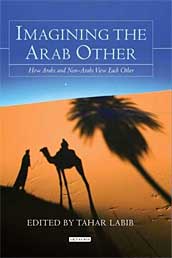|
Reviewed by Daniel G. Shaw, Ph.D., Professor of Philosophy, Pikes Peak Community College Another entry in an overlong series of discussions on the construction of “otherness,” this anthology represents some of the results of an international colloquium held in 1993 by the Arab Association of Sociology, an organization that seems no longer to exist. In the preface, the book’s editor Tahir Labib purports this to be a set of papers chosen to “reflect the crossing look between two cultures” (vii) and advises the reader that the book contains only a selection of all the papers given. As with many an anthology, this title offers a mixed bag of scholarly efforts. Part one of this work, On the Otherness Question, largely rehashes previous scholarship in the vein of Edward Said. An interesting exception is to be found in Haidar Ibrahim Ali’s “The Other’s Image: The Sociology of Difference,” which looks not only at the Arab construct of otherness, but at the broader Islamic construct, suggesting that in the revisionist work of Sayyid Qutb we find a more Manichaean reading of the Dar al-Harb, a greater demonization of the non-Muslim than found in prior treatments of non-Muslim cultures. The book’s second section, The Arab View of the Other, contains some of its most valuable and scholarly papers. Of particularly high quality is Helmi Sharawi’s “The African in Arab Culture: Dynamics of Inclusion and Exclusion.” Sharawi elucidates a paradox in the Arab image of the Black Muslim, contrasting the “ideal” construct of the faithful Companion Bilal (as encapsulated in the Qur’an and Sunna) with the increasingly negative depiction of blacks in later Sharia rulings. Sharawi suggests that the economic necessities of empire required more justification for the use of black slaves, thus encouraging the ulama toward constructing legal mechanisms that made emancipation of blacks increasingly more difficult. In addition, the author rejects two contemporary Arab notions about the early Arab use of black slaves: 1) that such instances were few in number and 2) that black slavery was somehow “necessary” to the early Arab economy. The latter part of Sharawi’s paper carries these themes into contemporary problems of disassociation between African and Arab. Part three, The Other’s View of the Arab, contains some pieces of moderate interest, noting the depiction of the Arab in French text books and Catholic Church documents; this is by far the weakest section of the work, and perhaps unnecessary. Section four, The Other of Literature and Arts, contributes some interesting observations about non-Arab Muslim observations of the Arab, but little of groundbreaking insight. Imagining the Arab Other suffers from several weaknesses. We are given little if any information about the contributors and their credentials. Often, the translations are weak, as with the “crossing look” reference above, and many pieces are over laden with jargon. Frustratingly, the authors often use the terms “Arab” and “Muslim” interchangeably. The organization said to represent these opinions is recognized neither by the American Sociology Association (ASA) nor the International Sociology Association (ISA). One of the more serious omissions to this collection, an omission admitted to by the editor himself, is that of those conference papers which dealt with Arab images of “other” Arabs. Apparently such papers were presented at this conference but not included in this work. Given increasing interest in inter-Arab conflicts these days, such insights would have proved exceptionally useful. Another key weakness of this compendium is its failure to address in more critical detail the role religion plays in creating otherness. Lacking these investigations, the work as it stands, with the exception of Sharawi and a few others, contains few new significant scholarly insights. |


 Imagining the Arab Other: How Arabs and Non-Arabs View Each Other
Imagining the Arab Other: How Arabs and Non-Arabs View Each Other